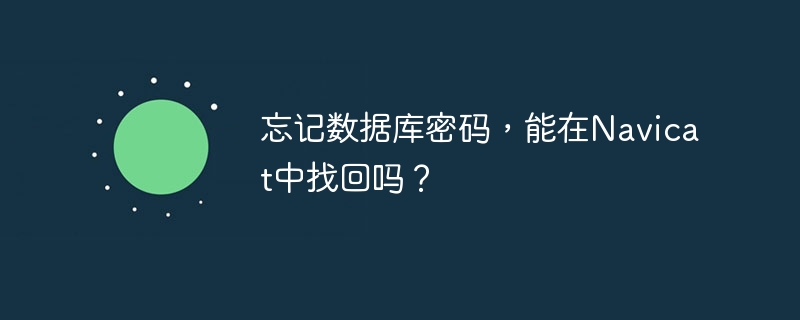使用go语言操作mongodb的核心步骤包括连接数据库、定义数据模型、执行crud操作。1. 首先安装驱动并建立连接,使用mongo.connect函数连接数据库并检查连接状态;2. 定义结构体映射文档,通过bson标签将结构体字段与文档键对应;3. 执行增删改查操作,如insertone插入文档,findone读取单个文档,updateone更新文档,deleteone删除文档;4. 管理连接池和错误处理,设置最大连接数及使用context控制超时;5. 创建索引优化查询性能,使用indexes().createone()创建索引以提升查询效率。

直接使用go语言操作mongodb,核心在于连接、数据模型的定义、CRUD操作的实现。

连接MongoDB,定义数据模型,进行增删改查。

如何使用Go语言连接MongoDB数据库?
首先,你需要安装MongoDB的Go驱动。在命令行中运行:go get go.mongodb.org/mongo-driver/mongo。
立即学习“go语言免费学习笔记(深入)”;

接下来,在你的Go代码中,你可以使用以下代码连接到MongoDB:
package main import ( "context" "fmt" "log" "time" "go.mongodb.org/mongo-driver/mongo" "go.mongodb.org/mongo-driver/mongo/options" ) func main() { // 设置连接选项 clientOptions := options.Client().ApplyURI("mongodb://localhost:27017") // 替换为你的MongoDB连接字符串 // 连接到MongoDB ctx, cancel := context.WithTimeout(context.Background(), 10*time.Second) defer cancel() client, err := mongo.Connect(ctx, clientOptions) if err != nil { log.Fatal(err) } // 检查连接 err = client.Ping(ctx, nil) if err != nil { log.Fatal(err) } fmt.Println("Connected to MongoDB!") // 关闭连接 (可选,但建议在程序结束时执行) defer func() { if err = client.Disconnect(ctx); err != nil { panic(err) } }() }
这段代码做了几件事:定义了连接选项(包括MongoDB的URI),使用mongo.Connect函数尝试建立连接,然后使用client.Ping检查连接是否成功。记得替换mongodb://localhost:27017为你的MongoDB连接字符串。连接成功后,会打印”Connected to MongoDB!”。 最好在程序结束时关闭连接,释放资源。
如何定义Go语言的数据模型来对应MongoDB文档?
在MongoDB中,数据以文档的形式存储。在Go语言中,你需要定义一个结构体来映射这些文档。例如,如果你有一个users集合,每个文档包含name和age字段,你可以这样定义结构体:
type User struct { ID primitive.ObjectID `bson:"_id,omitempty"` // MongoDB的ObjectId Name string `bson:"name"` Age int `bson:"age"` }
bson:”name”这样的标签告诉go-bson库如何将结构体字段映射到MongoDB文档中的字段。omitempty选项表示如果该字段为空,则在序列化时忽略它。 primitive.ObjectID 是 MongoDB 文档的默认主键类型。 你需要导入 go.mongodb.org/mongo-driver/bson/primitive 包来使用它。
如何使用Go语言进行MongoDB的CRUD操作?
有了连接和数据模型,就可以开始进行CRUD操作了。
创建 (Create):
import ( "context" "fmt" "log" "time" "go.mongodb.org/mongo-driver/bson/primitive" "go.mongodb.org/mongo-driver/mongo" "go.mongodb.org/mongo-driver/mongo/options" ) type User struct { ID primitive.ObjectID `bson:"_id,omitempty"` Name string `bson:"name"` Age int `bson:"age"` } func main() { // 连接到MongoDB (省略连接代码,参考前一个例子) clientOptions := options.Client().ApplyURI("mongodb://localhost:27017") ctx, cancel := context.WithTimeout(context.Background(), 10*time.Second) defer cancel() client, err := mongo.Connect(ctx, clientOptions) if err != nil { log.Fatal(err) } defer func() { if err = client.Disconnect(ctx); err != nil { panic(err) } }() Collection := client.Database("mydatabase").Collection("users") // 创建一个新用户 newUser := User{ Name: "Alice", Age: 30, } insertResult, err := collection.InsertOne(ctx, newUser) if err != nil { log.Fatal(err) } fmt.Println("Inserted a single document: ", insertResult.InsertedID) }
读取 (Read):
import ( "context" "fmt" "log" "time" "go.mongodb.org/mongo-driver/bson" "go.mongodb.org/mongo-driver/bson/primitive" "go.mongodb.org/mongo-driver/mongo" "go.mongodb.org/mongo-driver/mongo/options" ) type User struct { ID primitive.ObjectID `bson:"_id,omitempty"` Name string `bson:"name"` Age int `bson:"age"` } func main() { // 连接到MongoDB (省略连接代码) clientOptions := options.Client().ApplyURI("mongodb://localhost:27017") ctx, cancel := context.WithTimeout(context.Background(), 10*time.Second) defer cancel() client, err := mongo.Connect(ctx, clientOptions) if err != nil { log.Fatal(err) } defer func() { if err = client.Disconnect(ctx); err != nil { panic(err) } }() collection := client.Database("mydatabase").Collection("users") // 查询一个用户 filter := bson.D{{Key: "name", Value: "Alice"}} // 查找name为Alice的用户 var result User err = collection.FindOne(ctx, filter).Decode(&result) if err != nil { log.Fatal(err) } fmt.Printf("Found a single document: %+vn", result) //查询所有用户 findOptions := options.Find() findOptions.SetLimit(10) // 定义一个切片用于存储查询结果 var results []*User // 查询所有文档 cur, err := collection.Find(ctx, bson.D{{}}, findOptions) if err != nil { log.Fatal(err) } // 循环遍历查询结果 for cur.Next(ctx) { var elem User err := cur.Decode(&elem) if err != nil { log.Fatal(err) } results = append(results, &elem) } if err := cur.Err(); err != nil { log.Fatal(err) } // 关闭游标 cur.Close(ctx) fmt.Printf("Found multiple documents (array of pointers): %+vn", results) }
更新 (Update):
import ( "context" "fmt" "log" "time" "go.mongodb.org/mongo-driver/bson" "go.mongodb.org/mongo-driver/mongo" "go.mongodb.org/mongo-driver/mongo/options" ) func main() { // 连接到MongoDB (省略连接代码) clientOptions := options.Client().ApplyURI("mongodb://localhost:27017") ctx, cancel := context.WithTimeout(context.Background(), 10*time.Second) defer cancel() client, err := mongo.Connect(ctx, clientOptions) if err != nil { log.Fatal(err) } defer func() { if err = client.Disconnect(ctx); err != nil { panic(err) } }() collection := client.Database("mydatabase").Collection("users") // 更新一个用户 filter := bson.D{{Key: "name", Value: "Alice"}} update := bson.D{{Key: "$set", Value: bson.D{{Key: "age", Value: 31}}}} // 将Alice的年龄更新为31 updateResult, err := collection.UpdateOne(ctx, filter, update) if err != nil { log.Fatal(err) } fmt.Printf("Matched %v documents and updated %v documents.n", updateResult.MatchedCount, updateResult.ModifiedCount) }
删除 (Delete):
import ( "context" "fmt" "log" "time" "go.mongodb.org/mongo-driver/bson" "go.mongodb.org/mongo-driver/mongo" "go.mongodb.org/mongo-driver/mongo/options" ) func main() { // 连接到MongoDB (省略连接代码) clientOptions := options.Client().ApplyURI("mongodb://localhost:27017") ctx, cancel := context.WithTimeout(context.Background(), 10*time.Second) defer cancel() client, err := mongo.Connect(ctx, clientOptions) if err != nil { log.Fatal(err) } defer func() { if err = client.Disconnect(ctx); err != nil { panic(err) } }() collection := client.Database("mydatabase").Collection("users") // 删除一个用户 filter := bson.D{{Key: "name", Value: "Alice"}} deleteResult, err := collection.DeleteOne(ctx, filter) if err != nil { log.Fatal(err) } fmt.Printf("Deleted %v documents in the users collectionn", deleteResult.DeletedCount) }
如何处理MongoDB连接池和超时?
MongoDB驱动内部会管理连接池。你可以通过options.Client().SetMaxPoolSize()来设置连接池的最大连接数。超时可以通过context.WithTimeout()来控制,就像上面代码示例中使用的那样。
如何处理MongoDB中的错误?
在上面的例子中,我们使用log.Fatal(err)来处理错误。在实际应用中,你可能需要更精细的错误处理,例如,区分连接错误、查询错误等,并采取不同的处理策略。
如何使用MongoDB的索引优化查询?
索引可以显著提高查询性能。你可以使用collection.Indexes().CreateOne()或collection.Indexes().CreateMany()来创建索引。例如,为users集合的name字段创建一个索引:
import ( "context" "fmt" "log" "time" "go.mongodb.org/mongo-driver/bson" "go.mongodb.org/mongo-driver/mongo" "go.mongodb.org/mongo-driver/mongo/options" "go.mongodb.org/mongo-driver/mongo/readpref" ) func main() { // 连接到MongoDB (省略连接代码) clientOptions := options.Client().ApplyURI("mongodb://localhost:27017") ctx, cancel := context.WithTimeout(context.Background(), 10*time.Second) defer cancel() client, err := mongo.Connect(ctx, clientOptions) if err != nil { log.Fatal(err) } defer func() { if err = client.Disconnect(ctx); err != nil { panic(err) } }() collection := client.Database("mydatabase").Collection("users") // 创建索引 indexModel := mongo.IndexModel{ Keys: bson.D{{Key: "name", Value: 1}}, // 1表示升序索引,-1表示降序索引 Options: options.Index().SetName("name_index"), } _, err = collection.Indexes().CreateOne(ctx, indexModel) if err != nil { log.Fatal(err) } fmt.Println("Index created successfully!") }
索引对于大型数据集的查询性能至关重要。记得根据你的查询模式创建合适的索引。


















